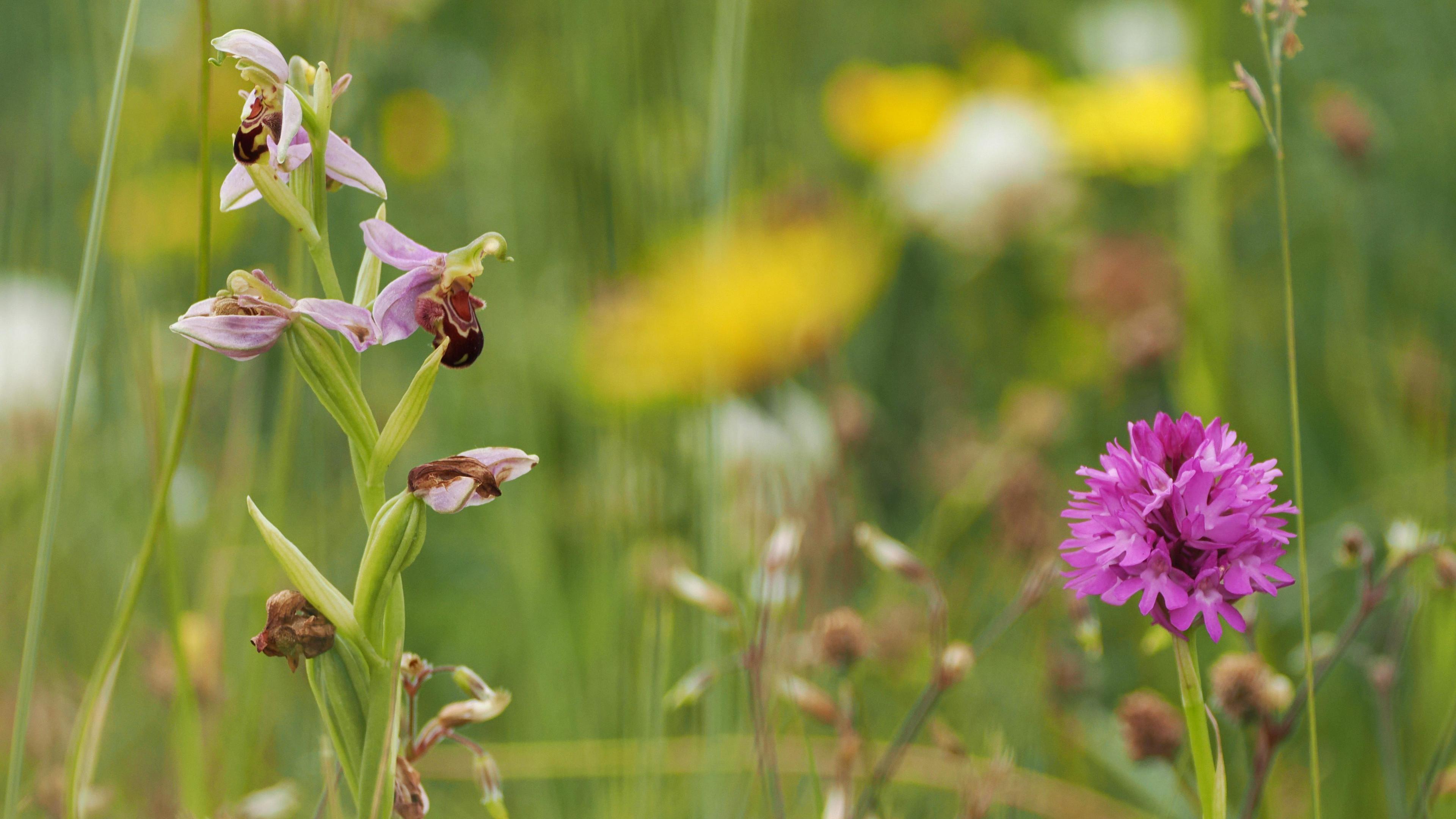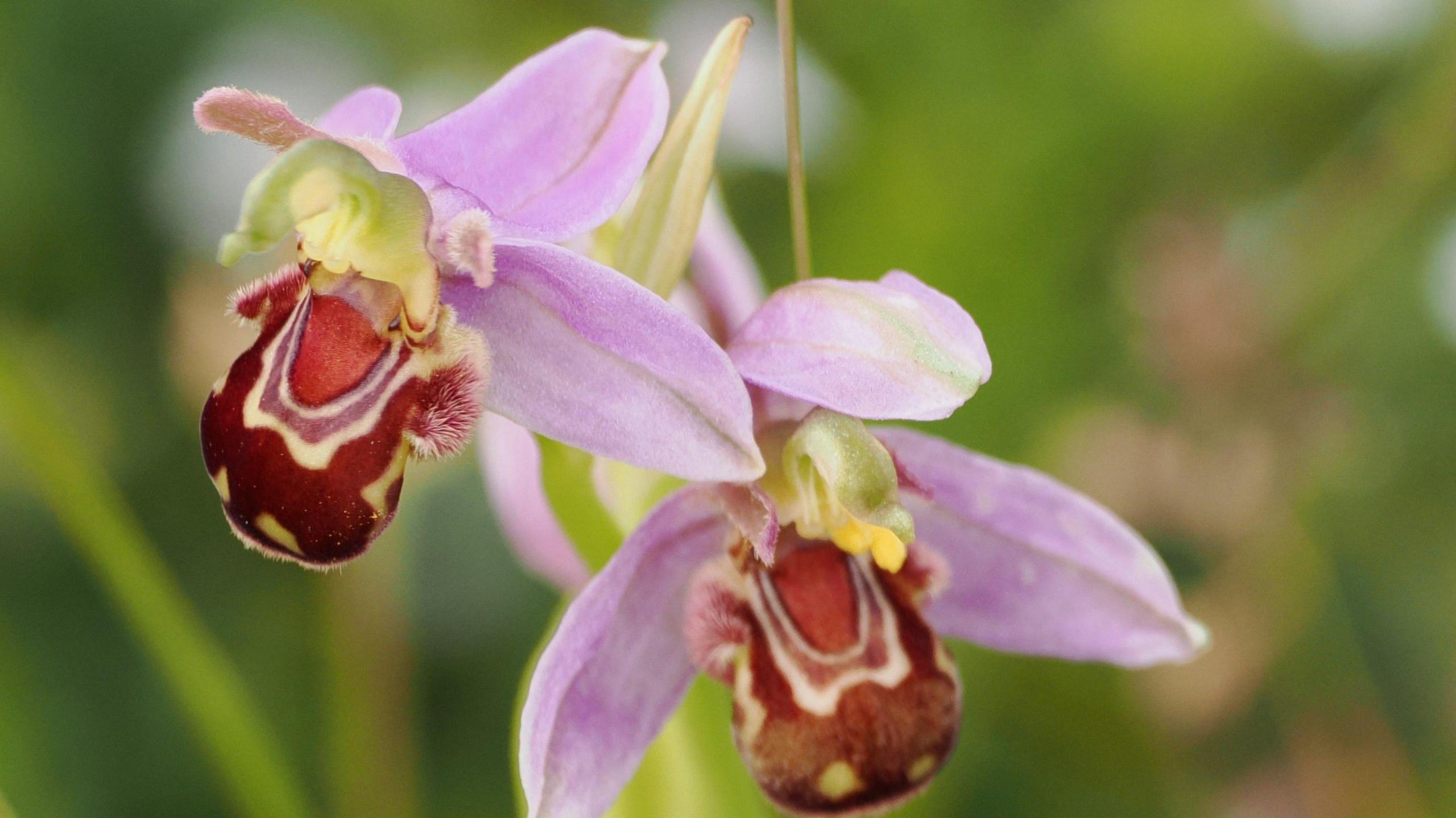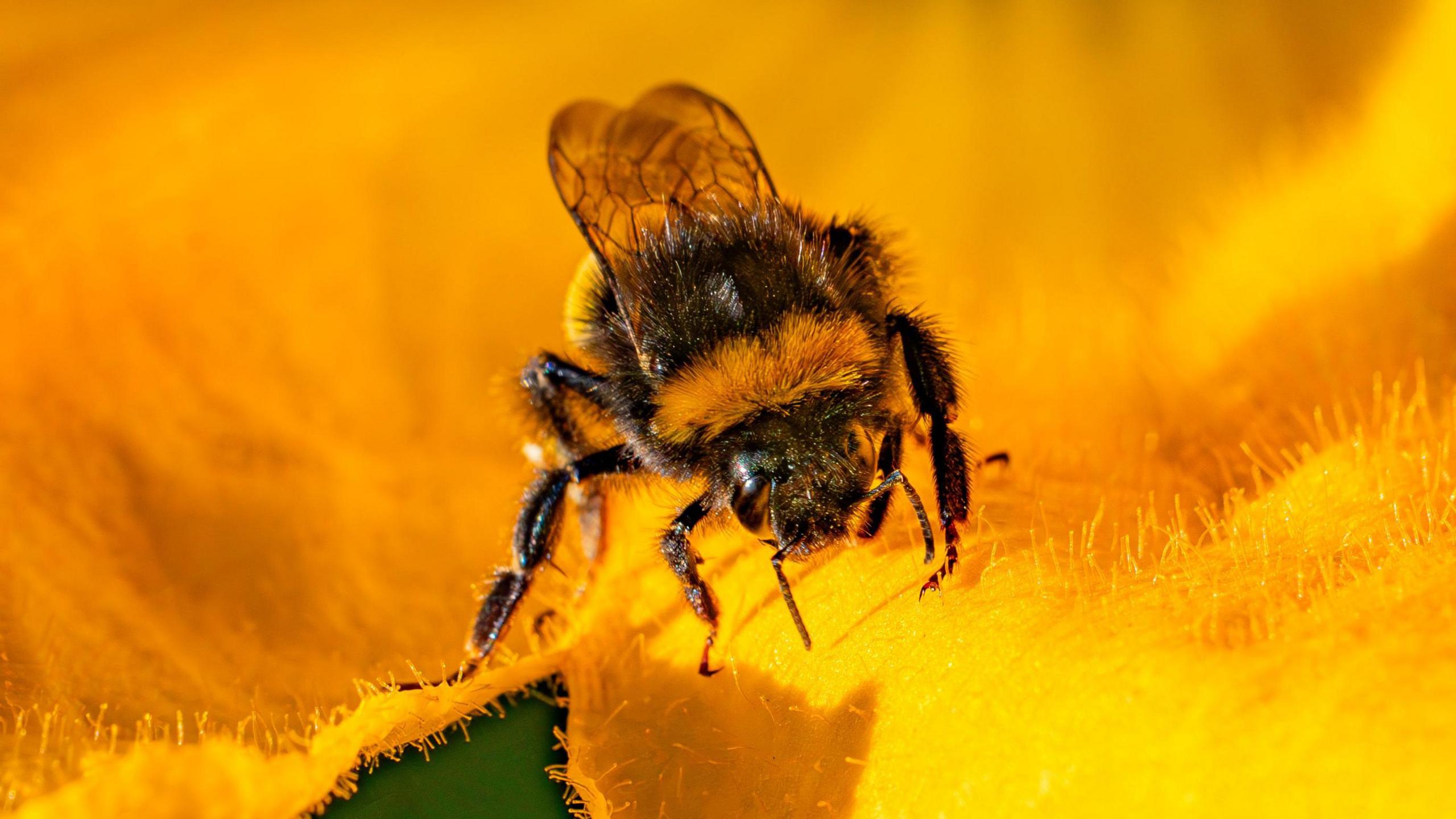Cows help bee orchids return to nature reserve

Bee orchids have not been seen at Spurn Point since the 1990s
- Published
A species thought lost from Spurn Point National Nature Reserve has flowered for the first time in 30 years.
Staff believe the reappearance of the bee orchid is due to a new conservation grazing regime.
Cows were controlled via GPS collar and allowed to eat only in specific areas, rather than roaming freely where they were naturally attracted to eating sweet flowers.
It helped to create the "right conditions" for a wide variety of wild flowers to grow on the reserve's Chalk Bank meadow, which Rosie Jaques, reserve and marine officer, said was an "amazing result".

The orchid is named for its velvety lip, which looks like a female bee
Bee orchids, so-called because of their similar appearance to the bee - were recorded in very small numbers at Spurn Point in the 1990s.
But they were not seen again until this year when staff from Yorkshire Wildlife Trust, external counted 21 new plants.
Originally confined to grassland in southern and south-eastern England, bee orchids have been gradually extending their range northwards, especially in northeast England where they have spread along the coast.
They are highly adaptable plants, particularly to rising temperatures, and so the Trust said it was considered by some to be a good indicator of how the climate and landscapes are changing.
Ms Jaques said she was "absolutely delighted that the work we have been doing at Spurn has meant bee orchids have been able to re-establish" and said she "hopes the population will be able to grow over the coming years”.
Spurn, located at the very end of the northern bank of the Humber estuary, is home to other important and rare species, including pyramidal orchids, sea holly and narrow-leaved bird’s foot trefoil.
Follow BBC East Yorkshire on Facebook, external, X (formerly Twitter), external and Instagram, external. Send your story ideas to eastyorkslincs.news@bbc.co.uk, external
Related topics
- Published24 July 2024

- Published30 April 2024